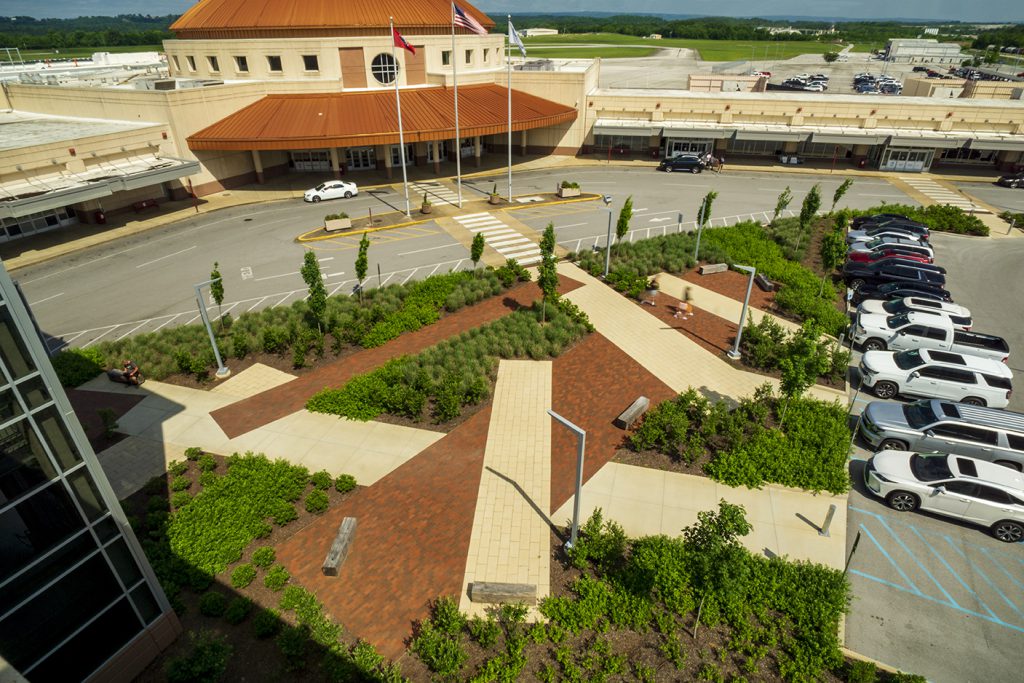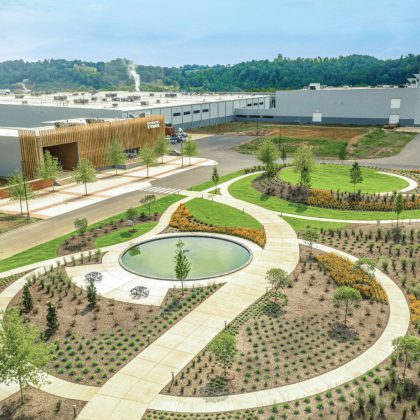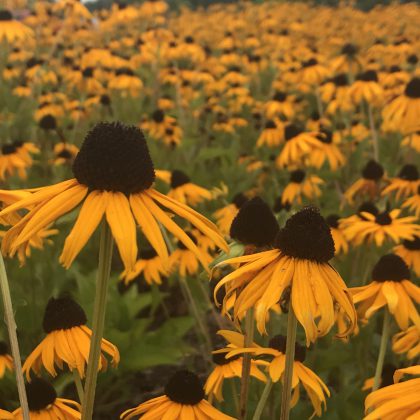Chattanooga Airport is a growing regional airport focused on balancing safety, sustainability, and welcoming aesthetics. But for years, neglected landscaping attracted wildlife, such as birds, which created operational hazards on the campus. Counter to many native landscaping efforts, a chief priority for the Chattanooga Airport was to design a landscape that would deter the birds and other wildlife to enhance operational safety. To find a solution, the Chattanooga Airport Authority turned to native plants.
Native species not only thrive in the climate of southeast Tennessee, but proper plant selection has helped deter wildlife from critical airfield areas. Additionally, since implementing their native landscape design, the airport has seen other significant benefits: a lush and thriving campus, virtually no ongoing maintenance costs, improved outdoor spaces for employees and travelers, and a consistent landscaping template they plan to replicate across future expansion projects.

Preparing for Take Off – A Native Planting Plan
As “the region’s airport,” the Chattanooga Airport serves as a vital transportation hub for residents and businesses in northeast Alabama, northwest Georgia, and southeast Tennessee. As air traffic and infrastructure demands have grown, the airport has increasingly prioritized making its campus both safe and visually appealing. With a history of limited landscaping investment, CHA recognized a need for a long-term solution that would improve first impressions while minimizing risks, particularly from birds that could interfere with airfield operations.
Before using native plants, the Chattanooga Airport Authority faced challenges with overgrown, wildlife-attracting landscaping that became costly and dangerous. They lacked a dedicated landscaping team and needed a solution that would thrive with minimal intervention.
Working with WMWA Landscape Architects and other contractors, the Chattanooga Airport Authority selected around 10 species of native plants known to flourish in the local climate. These species provided a lush, welcoming appearance without attracting wildlife to operational areas. Drought-tolerant and low-maintenance, the plants have reduced upkeep needs, with almost no additional maintenance costs beyond occasional replacements.
Cruising Ahead – A Landscaping Model for Expansion
hree years after planting, the landscape is thriving, and the airport continues to use this model as a template for two new hangars, a public park, and future garage projects beginning later this year.
Beyond safety and maintenance, the new landscape has had surprising benefits: employees and travelers now use the outdoor spaces more often, especially during pleasant seasons.
Additionally, the Chattanooga Metropolitan Airport Authority leadership plans to develop a toolkit based on their success to guide future landscaping decisions, ensuring that their native green spaces continue to grow sustainably without the expense of a full-time crew.
Though much of their work happens in the air, the Chattanooga Metropolitan Airport Authority demonstrates how decisions on the ground can offer beauty, functionality, and long-term cost savings for organizations with specific environmental needs.


